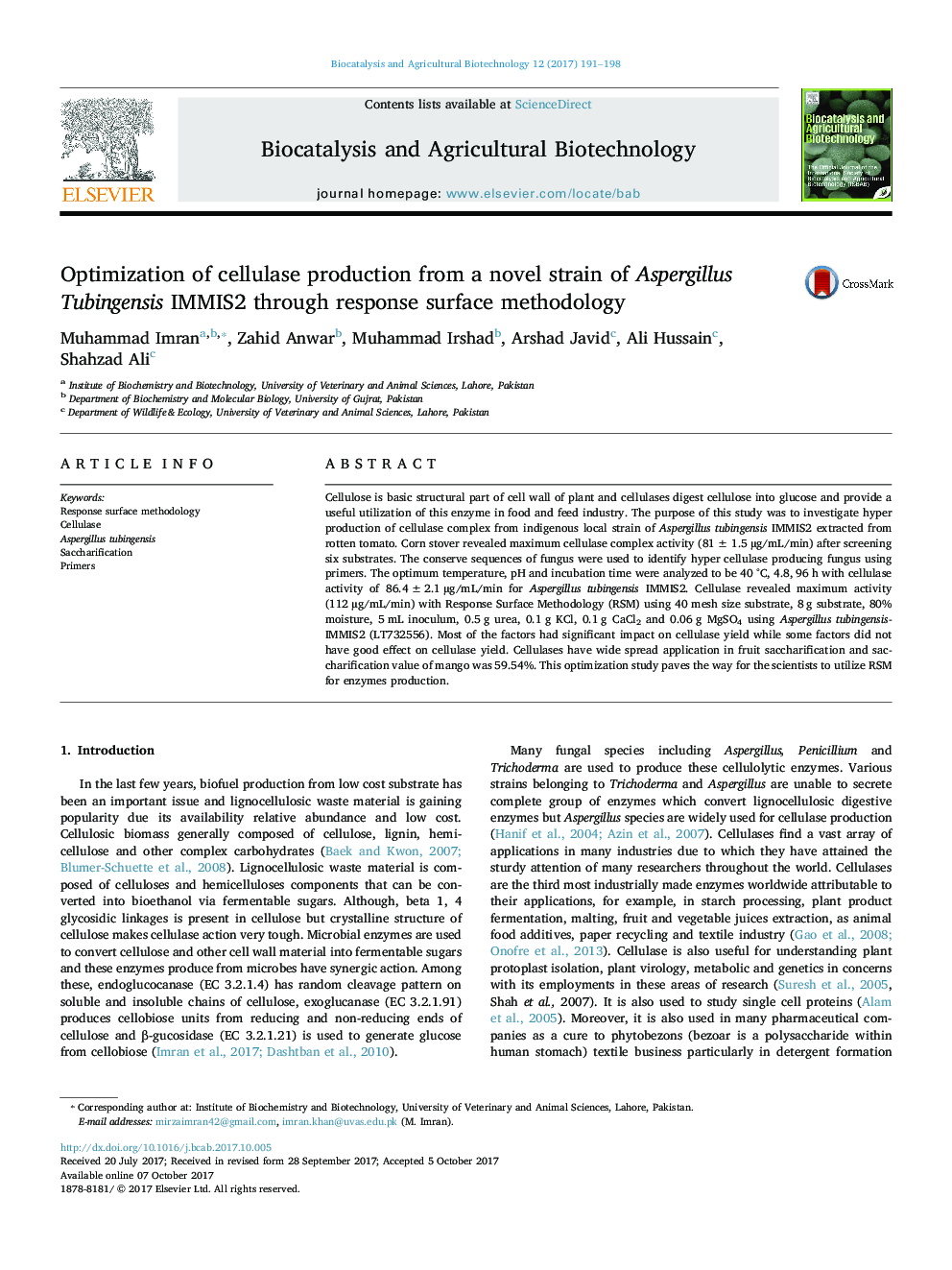| Article ID | Journal | Published Year | Pages | File Type |
|---|---|---|---|---|
| 8406170 | Biocatalysis and Agricultural Biotechnology | 2017 | 8 Pages |
Abstract
Cellulose is basic structural part of cell wall of plant and cellulases digest cellulose into glucose and provide a useful utilization of this enzyme in food and feed industry. The purpose of this study was to investigate hyper production of cellulase complex from indigenous local strain of Aspergillus tubingensis IMMIS2 extracted from rotten tomato. Corn stover revealed maximum cellulase complex activity (81 ± 1.5 µg/mL/min) after screening six substrates. The conserve sequences of fungus were used to identify hyper cellulase producing fungus using primers. The optimum temperature, pH and incubation time were analyzed to be 40 °C, 4.8, 96 h with cellulase activity of 86.4 ± 2.1 µg/mL/min for Aspergillus tubingensis IMMIS2. Cellulase revealed maximum activity (112 µg/mL/min) with Response Surface Methodology (RSM) using 40 mesh size substrate, 8 g substrate, 80% moisture, 5 mL inoculum, 0.5 g urea, 0.1 g KCl, 0.1 g CaCl2 and 0.06 g MgSO4 using Aspergillus tubingensis-IMMIS2 (LT732556). Most of the factors had significant impact on cellulase yield while some factors did not have good effect on cellulase yield. Cellulases have wide spread application in fruit saccharification and saccharification value of mango was 59.54%. This optimization study paves the way for the scientists to utilize RSM for enzymes production.
Related Topics
Life Sciences
Agricultural and Biological Sciences
Agricultural and Biological Sciences (General)
Authors
Muhammad Imran, Zahid Anwar, Muhammad Irshad, Arshad Javid, Ali Hussain, Shahzad Ali,
